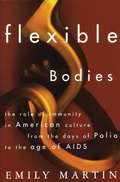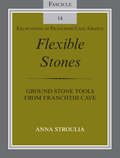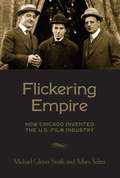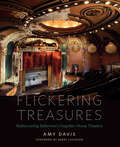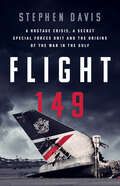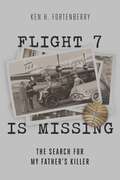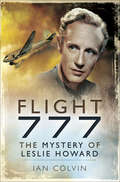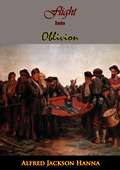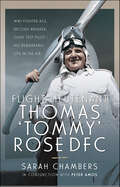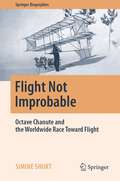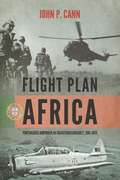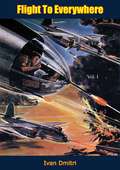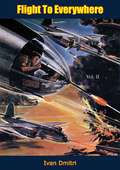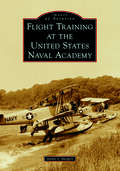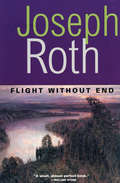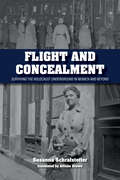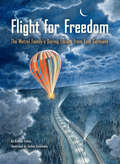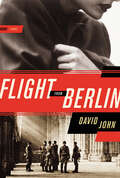- Table View
- List View
Flexible Bodies: Tracking Immunity in American Culture from the Days of Polio to the Age of AIDS
by Emily MartinEmily Martin traces Americans' changing ideas about health and immunity since the 1940s. She explores the implications of our emphasis on 'flexibility' in contexts from medicine to the corporate world, warning that we may be approaching a new form of social Darwinism.
Flexible Stones: Ground Stone Tools from Franchthi Cave, Fascicle 14, Excavations at Franchthi Cave, Greece (Excavations at Franchthi Cave, Greece)
by Anna StrouliaDespite their ubiquitous presence among prehistoric remains in Greece, ground stone tools have yet to attract the same kind of attention as have other categories of archaeological material, such as pottery or lithics. Flexible Stones provides a detailed analysis of the material discovered during the excavations at Franchthi Cave, Peloponnese, Greece. Approximately 500 tools, the raw material used for their manufacture, as well as the byproducts of such manufacture were found. Most of this collection comes from the Neolithic component of the site—including a small number of Palaeolithic and Mesolithic cases—with a large number of the studied tools indicating multiple uses. Anna Stroulia sees the multifunctional character of these tools as a conscious choice that reflects a flexible attitude of tool makers and users toward tools and raw materials. A CD-Rom with 209 additional plates is included.
Flickering Empire: How Chicago Invented the U.S. Film Industry
by Adam Selzer Michael Glover SmithFlickering Empire tells the fascinating yet little-known story of how Chicago served as the unlikely capital of American film production in the years before the rise of Hollywood (1907–1913). As entertaining as it is informative, Flickering Empire straddles the worlds of academic and popular nonfiction in its vivid illustration of the rise and fall of the major Chicago movie studios in the mid-silent era (principally Essanay and Selig Polyscope). Colorful, larger-than-life historical figures, including Thomas Edison, Charlie Chaplin, Oscar Micheaux, and Orson Welles, are major players in the narrative—in addition to important though forgotten industry titans, such as "Colonel" William Selig, George Spoor, and Gilbert "Broncho Billy" Anderson.
Flickering Treasures: Rediscovering Baltimore's Forgotten Movie Theaters
by Amy DavisThe riveting story of Baltimore’s movie theaters over the past century, eloquently told through extraordinary photographs and poignant reminiscences.2018 Winner of the Preservation Award of the Baltimore HeritageBaltimore has been home to hundreds of theaters since the first moving pictures flickered across muslin sheets. These monuments to popular culture, adorned with grandiose architectural flourishes, seemed an everlasting part of Baltimore’s landscape. By 1950, when the city’s population peaked, Baltimore’s movie fans could choose from among 119 theaters. But by 2016, the number of cinemas had dwindled to only three. Today, many of the city’s theaters are boarded up, even burned out, while others hang on with varying degrees of dignity as churches or stores. In Flickering Treasures, Amy Davis, an award-winning photojournalist for the Baltimore Sun, pairs vintage black-and-white images of opulent downtown movie palaces and modest neighborhood theaters with her own contemporary full-color photographs, inviting us to imagine Charm City’s past as we confront today’s neglected urban landscape. Punctuated by engaging stories and interviews with local moviegoers, theater owners, ushers, and cashiers, plus commentary from celebrated Baltimore filmmakers Barry Levinson and John Waters, the book brings each theater and decade vividly to life. From Electric Park, the Century, and the Hippodrome to the Royal, the Parkway, the Senator, and scores of other beloved venues, the book delves into Baltimore’s history, including its troubling legacy of racial segregation. The descriptions of the technological and cultural changes that have shaped both American cities and the business of movie exhibition will trigger affectionate memories for many readers. A map and timeline reveal the one-time presence of movie houses in every corner of the city, and fact boxes include the years of operation, address, architect, and seating capacity for each of the 72 theaters profiled, along with a brief description of each theater’s distinct character. Highlighting the emotional resonance of film and the loyalty of Baltimoreans to their neighborhoods, Flickering Treasures is a profound story of change, loss, and rebirth.
Flickering Treasures: Rediscovering Baltimore's Forgotten Movie Theaters
by Amy DavisThese vintage and contemporary images of Baltimore movie palaces explore the changing face of Charm City with stories and commentary by filmmakers.Since the dawn of popular cinema, Baltimore has been home to hundreds of movie theaters, many of which became legendary monuments to popular culture. But by 2016, the number of cinemas had dwindled to only three. Many theaters have been boarded up, burned out, or repurposed. In this volume, Baltimore Sun photojournalist Amy Davis pairs vintage black-and-white images of downtown movie palaces and modest neighborhood theaters with her own contemporary color photos. Flickering Treasures delves into Baltimore’s cultural and cinematic history, from its troubling legacy of racial segregation to the technological changes that have shaped both American cities and the movie exhibition business. Images of Electric Park, the Century, the Hippodrome, and scores of other beloved venues are punctuated by stories and interviews, as well as commentary from celebrated Baltimore filmmakers Barry Levinson and John Waters.A map and timeline reveal the one-time presence of movie houses in every corner of the city, and fact boxes include the years of operation, address, architect, and seating capacity for each of the 72 theaters profiled, along with a brief description of each theater’s distinct character.
Flickers of Film
by Jason SperbWhether paying tribute to silent films in Hugo and The Artist or celebrating arcade games in Tron: Legacy and Wreck-It-Ralph, Hollywood suddenly seems to be experiencing a wave of intense nostalgia for outmoded technologies. To what extent is that a sincere lament for modes of artistic production that have nearly vanished in an all-digital era? And to what extent is it simply a cynical marketing ploy, built on the notion that nostalgia has always been one of Hollywood's top-selling products? In Flickers of Film, Jason Sperb offers nuanced and unexpected answers to these questions, examining the benefits of certain types of film nostalgia, while also critiquing how Hollywood's nostalgic representations of old technologies obscure important aspects of their histories. He interprets this affection for the prehistory and infancy of digital technologies in relation to an industry-wide anxiety about how the digital has grown to dominate Hollywood, pushing it into an uncertain creative and economic future. Yet he also suggests that Hollywood's nostalgia for old technologies ignores the professionals who once employed them, as well as the labor opportunities that have been lost through the computerization and outsourcing of film industry jobs. Though it deals with nostalgia, Flickers of Film is strikingly cutting-edge, one of the first studies to critically examine Pixar's role in the film industry, cinematic representations of videogames, and the economic effects of participatory culture. As he takes in everything from Terminator: Salvation to The Lego Movie, Sperb helps us see what's distinct about this recent wave of self-aware nostalgic films--how Hollywood nostalgia today isn't what it used to be.
Flight 149: A Hostage Crisis, a Secret Special Forces Unit, and the Origins of the Gulf War
by Stephen DavisA gripping, real-life drama that reveals the true story of a plane full of unsuspecting passengers who landed in a war zone and were delivered into the hands of a murderous dictator. On August 1, 1990, Flight 149 was scheduled for its routine London-to-Kuala Lumpur run. But when the plane, carrying 385 passengers and crew, landed at a Kuwait airport to refuel that day, it was surrounded by Iraqi tanks and about to be bombed by fighter jets. The passengers and crew were kept as hostages and suffered brutal treatment including violent attacks, sexual assaults, and mock executions. When the survivors were eventually released, they were never told why their plane landed in the middle of an invasion, or who a mysterious team of late arrivals on the flight might have been. Their story was overshadowed by the ensuing Gulf War. Until now. In Flight 149, Stephen Davis draws on unique witness accounts from the hostages, and uncovers the lies and coverups orchestrated by the British secret service and CIA. This story reveals an astonishing misuse of intelligence that changed the course of history and forever altered the relationship between the West and the Middle East.
Flight 7 is Missing: The Search For My Father's Killer
by Ken FortenberryBrilliantly researched, Flight 7 is Missing -- authored by an award-winning journalist who also happens to be the son of the ill-fated flight's copilot -- offers up the most plausible solution yet to one of the most mysterious airline disasters in aviation history."This is a must-read! To we professional pilots routinely flying the oceans of planet earth, the possibility that our loved ones back home might someday be told that our flight is missing is beyond a recurring nightmare. Author Ken Fortenberry yanks you into the dark heart of such a nightmare as he chases the missing answers to a major airline disaster across the cold trails of six decades, all to answer the key question which has haunted him since his early years: Who killed his father. This is a must-read!" - Capt. John J. Nance, New York Times best-selling author, and Aviation Analyst, ABC World NewsThe New York Times called it one of the &“most vexing and unexplained&” mysteries in aviation history, and the crash of Pan American World Airways Flight 7 in November 1957 remains officially unsolved to this day. But Ken Fortenberry, an award-winning journalist whose father was the copilot and navigator aboard the ill-fated Boeing Stratocruiser, has devoted nearly sixty years of his life to unraveling this cold-case mystery, and has come to a staggering conclusion. A remarkably researched book packed with history and emotion, Flight 7 Is Missing: The Search for My Father&’s Killer is a gripping page-turner that reads like a fast-paced murder mystery. Join the author on his crusade to tirelessly track down every possible lead and eventually expose the person he believes responsible for this tragic crime."To we professional pilots routinely flying the oceans of planet earth, the possibility that our loved ones back home might someday be told that our flight is missing is beyond a recurring nightmare. Author Ken Fortenberry yanks you into the dark heart of such a nightmare as he chases the missing answers to a major airline disaster across the cold trails of six decades, all to answer the key question which has haunted him since his early years: Who killed his father. This is a must-read!" - Capt. John J. Nance, Alaska Airlines, Author and Aviation Analyst, ABC World News
Flight 777: The Mystery of Leslie Howard
by Ian ColvinOn 1 June 1943 Flight 777, a Douglas DC-3, en route from Lisbon to Britain, was shot down over the Bay of Biscay by German aircraft. Among the dead was the actor Leslie Howard, who had returned from Hollywood to England to help the British war effort. Also on board was Howards tax adviser, Alfred Chenhalls, who smoked cigars and looked remarkably like Winston Churchill. Did the Germans believe that Churchill was on board Flight 777? Other aircraft flying that route went unmolested by the Luftwaffe in spite of the German air presence over the Bay of Biscay. These flights were operated by Dutch crews flying aircraft of KLM, which were on charter to BOAC, and it was an experience Dutch crew that was lost that day. Ian Colvin carried out an exhaustive investigation into the incident, including interviewing former Luftwaffe personnel and this book, first published in 1957, is the result of his endeavors.
Flight From Fifth Avenue
by Catherine M. RaeIn 1911, rebelling against an arranged marriage and an unloving mother, Maida takes on an alias and several jobs, nearly losing her life in a fire...
Flight From Iraq: Attacks On Refugees And Other Foreigners And Their Treatment In Jordan
by Human Rights WatchThis report documents the plight of refugees and other non-nationals in Iraq after the fall of the government of Saddam Hussein on April 11, 2003. As of April 30, 2003, more than 1500 people, of whom some 560 were Palestinians had fled Iraq for Jordan, where they were being held in refugee camps in difficult conditions at the border. For a variety of reasons, all foreigners, but particularly Palestinians, are especially vulnerable to abuse by segments of the Iraqi population in U.S. occupied Iraq. In research in Baghdad and two refugee camps in Jordan, Human Rights Watch documented harassment and insecurity amongst many nationalities of foreigners in Iraq. Human Rights Watch also documented physical threats against and forced evictions of Palestinians by Iraqis who expressed resentment for the preferential treatment afforded Palestinians under the Saddam Hussein government.
Flight Into Oblivion
by Alfred Jackson HannaA well-researched and exciting tale of the flight of the Confederate Cabinet after the Southern defeat at the end of American Civil War, this book broke new ground, uncovered many new facts and was firmly established Alfred Jackson Hanna as a historical scholar.Hanna begins with General Lee's fatal telegram and the hasty exodus of Jefferson Davis and high officials to Danville, then Greensboro and Charlotte. From there the Confederate Cabinet dispersed, and the author follows each man's adventurous course in detail. Most of the fugitives headed for the pine barrens and scrub lands of Florida but were soon apprehended. Only John C. Breckinridge and Judah P. Benjamin successfully escaped, outwitting Federal officials and pirates along their way to Cuba. A classic work that makes for fabulous, spirited reading, Flight Into Oblivion, first published in 1938, soars once again.
Flight Lieutenant Thomas 'Tommy' Rose DFC: WWI Fighter Ace, Record Breaker, Chief Test Pilot—His Remarkable Life in the Air
by Sarah ChambersFlight Lieutenant Thomas ‘Tommy’ Rose, a First World War fighter ace, was a pioneer of private flying. He installed and managed the UK’s first fuel pump for private aviation at Brooklands before becoming Sales Manager for Phillips and Powis Aircraft Ltd. The chief flying instructor at several early flying schools, Tommy became the Chief Test Pilot for Miles Aircraft and was the winner of air races and pageants. He was undoubtedly a pilot who could always be relied on to amaze the onlookers with his fast, accurate stunts and low-level flying. Mentioned in Despatches in 1916 and awarded the DFC in 1918, Tommy was attacked in his aircraft several times, yet his astonishing ability at the controls of his aircraft enabled him to land without serious injury. By the time of the Armistice, Tommy had been credited with eleven ‘kills’. He continued to demonstrate these skills after the war and though this true trailblazer was widely known in his glory days during the early part of the twentieth century, little is remembered about him today. Yet Tommy Rose achieved the most incredible feats of aviation and was considered one of the finest pilots of his era, completing over 11,200 flying hours up to 1949. In the 1930s, Tommy took the Imperial Airways route through East Africa, to set up a new world record on the UK to Cape Town passage, beating Amy Mollison (Johnson) who took the shorter course down the west coast. He also won the King's Cup Air Race in 1935. Tommy flew many of the early RAF fighters from Maurice Farman to the Spitfire Mk.IX, and, from late 1939, when he was appointed Chief Test Pilot for Phillip & Powis Aircraft Ltd at Woodley (forerunners of Miles Aircraft Ltd), he test flew all Miles monoplane training and target towing aircraft, leaving in January 1946. His last position was as General Manager of Universal Flying Services Ltd at Fairoaks Aerodrome in Surrey. The result of decades of research by the author, through this book the life and adventures of one of history’s most accomplished and daring aviators can finally be told.
Flight Maps: Adventures with Nature in Modern America
by Jennifer PriceIn five sharply drawn chapters, Flight Maps charts the ways in which Americans have historically made connections—and missed connections—with nature. Beginning with an extraordinary chapter on the extinction of the Passenger Pigeon and the accompanying belligerent early view of nature’s inexhaustibility, Price then moves on to discuss the Audubon Society’s founding campaign in the 1890s against the extravagant use of stuffed birds to decorate women’s hats. At the heart of the book is an improbable and extremely witty history of the plastic pink flamingo, perhaps the totem of Artifice and Kitsch—nevertheless a potent symbol through which to plumb our troublesome yet powerful visions of nature. From here the story of the affluent Baby-Boomers begins. Through an examination of the phenomenal success of The Nature Company, TV series such as Northern Exposure and Dr. Quinn, Medicine Woman, and the sport-utility vehicle craze, the author ruminates on our very American, very urbanized and suburbanized needs, discontents, and desires for meaningful, yet artificially constructed connections to nature. Witty, at times even whimsical, Flight Maps is also a sophisticated and meditative archaeology of Americans’ very real and uneasy desire to make nature meaningful in their lives.
Flight Not Improbable: Octave Chanute and the Worldwide Race Toward Flight (Springer Biographies)
by Simine ShortThis book is a must-read for all those interested in the evolution of airplanes.Its protagonist, Octave Chanute, is best known for his scientific and collaborative approach to the engineering problems related to the development of flight and for the support he gave to the many aeronautical pioneers, including the Wright Brothers. But, as the author clearly demonstrates, this engineer’s contributions in the aeronautical field have frequently been underestimated, even though almost every famous and not so famous aeronautical enthusiast contacted him and used the readily available drawings of his glider to build and then learn to fly in their own design. Chanute’s biplane glider design, developed and flown first in 1896 in the Indiana Dunes along Lake Michigan, proved to be a key step in the evolution of the flying machine. By freely sharing not only drawings of the general design of this aircraft but also the lessons learned, the biplane became the starting point or prototype for many experimenters and can be considered the foundation for the modern airplane.This book focuses on Chanute’s work in aeronautics. Not having the internet of today, he became the “post-box of early aeronautics,” not only because of his landmark book “Progress in Flying Machines” but also because of his strong connections to anyone and everyone who worked in the aeronautical field. He made a point of continuing to learn throughout his own life, and strongly believed in sharing knowledge, while fostering and mentoring all those who were willing to learn.
Flight Plan Africa: Portuguese Airpower in Counterinsurgency, 1961-1974 (Wolverhampton Military Studies #4)
by John P. Cann<p>Following the 1952 reorganization of the Portuguese Air Force from the army and naval air arms, Portugal now had an entity dedicated solely to aviation that would bring it into line with its new NATO commitment. As it proceeded to develop a competence in modern multiengine and jet fighter aircraft for its NATO role and train a professional corps of pilots, it was suddenly confronted in 1961 with fighting insurgencies in all three of its African possessions. This development forced it to acquire an entirely new and separate air force, the African air force, to address this emerging danger. <p>This is the story of just how Portuguese leadership anticipated and dealt with this threat, and how it assembled an air force from scratch to meet it. The aircraft available at the time were largely castoffs from the larger, richer, and more sophisticated air forces of its NATO partners and not designed for counterinsurgency. Yet Portugal adapted them to the task and effectively crafted the appropriate strategies and tactics for their successful employment. <p>The book explores the vicissitudes of procurement, an exercise fraught with anti-colonial political undercurrents, the imaginative modification and adaptation of the aircraft to fight in the African theaters, and the development of tactics, techniques, and procedures for their effective employment against an elusive, clever, and dangerous enemy. Advances in weaponry, such as the helicopter gun ship, were the outgrowth of combat needs. The acquired logistic competences assured that the needed fuel types and lubricants, spare parts, and qualified maintenance personnel were available in even the most remote African landing sites. The advanced flying skills, such as visual reconnaissance and air-ground coordinated fire support, were honed and perfected. All of these aspects and more are explored and hold lessons in the application of airpower in any insurgency today.</p>
Flight Through the Ages: A 50th Anniversary Tribute to the Guild of Aviation Artists
by Artists of Aviation“A joy . . . covers the period from the Great War to the modern era with diversions into air shows and some of the personalities of the Guild.” —War History OnlineFlight Through the Ages was the title of the first annual exhibition of the Guild of Aviation Artists in 1971. This book celebrates 50 years of exhibitions and includes paintings by almost one hundred Guild artists, past and present, depicting aircraft from the earliest airborne activities through to the present day. There are balloons and airships, fighters and bombers from both world wars, including Spitfires and Lancasters, airliners from the early years of air travel through Concorde and on to the present day. There are also gliders and helicopters and the current generation of advanced aircraft among some 200 illustrations, most in full color. Artists include some of the most well-known British artists of their day and the works display imagination and creativity in a variety of different styles and treatments that bring flying machines to life. There are historical scenes and aircraft in their natural environment, showing action and some of the aviators and others from the world of aviation. There is a short history of the Guild and a step-by-step guide to one artist’s approach to the subject.“A magnificent series of images in a variety of styles . . . This is a lovely book in which to browse, feast your eyes and ponder on the magic of aviation.” —Flying in Ireland“Inspiration, pure and simple . . . this book provides a luscious ready reference of many of aviation’s most beautiful creations, each in a moment in time that draws us into its story.” —IPMS/USA
Flight To Everywhere [With Illustrations] Vol. I (Flight To Everywhere #1)
by Ivan DmitriA PICTURE JOURNEY OVER 12,000 MILES OF AIR TRANSPORT COMMAND ROUTES THROUGH JUNGLE, DESERT AND ARCTICFirst published in 1944, this is the first part of a stunning book that provides an in-depth look at the far-flung operations of the Air Transport Command and Army Air Forces, and provides a valuable contribution to the understanding of America’s heroic air accomplishments.Richly illustrated throughout with photographs and sketches by Ivan Dmitri. A renowned U.S. artist and colour photography pioneer, Dmitri produced the first ever color photograph gracing the cover of the Saturday Evening Post’s edition dated May 29, 1937, and his second cover in 1944, depicting his photo of General ‘Hap’ Arnold with B-17’s flying overhead, proved so popular that the United States used the photo image to print a very rare World War II war effort poster.
Flight To Everywhere [With Illustrations] Vol. II (Flight To Everywhere #2)
by Ivan DmitriA PICTURE JOURNEY OVER 12,000 MILES OF AIR TRANSPORT COMMAND ROUTES THROUGH JUNGLE, DESERT AND ARCTICFirst published in 1944, this is the first part of a stunning book that provides an in-depth look at the far-flung operations of the Air Transport Command and Army Air Forces, and provides a valuable contribution to the understanding of America’s heroic air accomplishments.Richly illustrated throughout with photographs and sketches by Ivan Dmitri. A renowned U.S. artist and colour photography pioneer, Dmitri produced the first ever color photograph gracing the cover of the Saturday Evening Post’s edition dated May 29, 1937, and his second cover in 1944, depicting his photo of General ‘Hap’ Arnold with B-17’s flying overhead, proved so popular that the United States used the photo image to print a very rare World War II war effort poster.
Flight Training at the United States Naval Academy (Images of Aviation)
by Andre J. SwygertThe United States Naval Academy was founded in 1845 in Annapolis, Maryland, after experience showed that the policy of training naval officers solely through shipboard experience was ineffective. The development of aircraft in the early 20th century was a technological change that impacted the academy. The efforts of naval aviation advocates, led by Capt. Washington I. Chambers, resulted in the Navy acquiring its first aircraft in 1911 and basing them near the US Naval Academy where sufficient land and material resources were available to support flight operations. Later, under Supt. Adm. Louis W. Nulton, aviation entered the curriculum as an element of fundamental naval education, taking a place among major subjects such as seamanship and gunnery. Classroom instruction and indoctrination flights provided all midshipmen with a familiarization in aviation as an important element in their development as naval officers before circumstances forced a shift of training to other facilities by 1962.
Flight Without End (Peter Owen Modern Classic Ser.)
by Joseph RothFrom the celebrated author of The Radetzky March comes the tragic story of a WWI officer caught in the tumult of a world on the verge of modernity. As an Austro-Hungarian officer on the Eastern Front of World War I, Franz Tunda was captured by the Russians and sent to Siberia. Dreaming of a return to his life in Vienna, he escapes from prison—only to get caught up in the Russian Revolution, fall in love, and fight for the Bolshevik cause. Upon finally returning to Europe, Tunda finds that the old order is gone and the Europe he once knew has changed utterly. Disillusioned and without a land to call home, Joseph Roth&’s tragic hero is a masterful expression of the archetypal modern man taken up by the currents of history.
Flight and Concealment: Surviving the Holocaust Underground in Munich and Beyond
by Susanna SchrafstetterBetween ten thousand and twelve thousand Jews tried to escape Nazi genocide by going into hiding. With the help of Jewish and non-Jewish relatives, friends, or people completely unknown to them, these "U-boats," as they came to be known, dared to lead a life underground. Flight and Concealment brings to light their hidden stories. Deftly weaving together personal accounts with a broader comparative look at the experiences of Jews throughout Germany, historian Susanna Schrafstetter tells the story of the Jews in Munich and Upper Bavaria who fled deportation by going underground.Archival sources and interviews with survivors and with the Germans who aided or exploited them reveal a complex, often intimate story of hope, greed, and sometimes betrayal. Flight and Concealment shows the options and strategies for survival of those in hiding and their helpers, and discusses the ways in which some Germans enriched themselves at the expense of the refugees.
Flight for Freedom: The Wetzel Family's Daring Escape from East Germany
by Kristen FultonAn Inspiring True Story about One Family's Escape from Behind the Berlin Wall!Peter was born on the east side of Germany, the side that wasn't free. He watches news programs rather than cartoons, and wears scratchy uniforms instead of blue jeans. His family endures long lines and early curfews. But Peter knows it won't always be this way. Peter and his family have a secret. Late at night in their attic, they are piecing together a hot air balloon—and a plan. Can Peter and his family fly their way to freedom? This is the true story of a boy and his family who risk their lives for the hope of freedom in a daring escape from East Germany via a handmade hot air balloon in 1979.• A perfect picture book for educators teaching about the Cold War, the Iron Curtain, and East Germany• Flight for Freedom is a showcase for lessons of bravery, heroism, family, and perseverance, as well as stunning history• Includes detailed maps of the Wetzel family's escape route and diagrams of their hot air balloonFor fans of historical nonfiction picture books like Let the Children March, The Wall, Growing Up Behind the Iron Curtain, and Armstrong: The Adventurous Journey of a Mouse to the Moon.• True life escape stories• For readers age 5–9• For teachers, librarians, and historiansKristen Fulton is a children's book author. She can always be found with a notebook in hand as she ventures through historical sites and museums. Most of the time she lives in Florida—but she can also be found traveling the country by RV.Torben Kuhlmann is an award-winning children's book author and illustrator. Starting in kindergarten he became known as "the draftsman." Flying machines and rich historical detail often adorn his work. He lives in Hamburg, Germany.
Flight from Berlin: A Novel
by David JohnA world-weary English reporter and a maverick American female Olympian find themselves caught in a lethal game between the Gestapo and British Secret Intelligence Service in David John’s spellbinding thriller Flight from Berlin. While traveling to Berlin on the Hindenburg to cover the 1936 Berlin Olympics, journalist Richard Denham meets socialite Eleanor Emerson, recently expelled from the U.S. swim team. Richard and Eleanor quickly discover the dark power of Hitler’s propaganda machine. Drawn together by danger and passion, Richard and Eleanor become involved in the high-stakes world of international intrigue must pull off a daring plan to survive the treachery of the Third Reich. But one wrong move could be their last. Flight from Berlin is a riveting story of love, courage, and betrayal that culminates in a breathtaking race against the forces of evil.
Flight from Chile: An Oral History of Exile
by Thomas Wright Rody Oñate2023 marks the fiftieth anniversary of General Pinochet&’s coup on September 11, 1973. During the wave of mass arrests, torture, and executions that followed, people began fleeing Chile. Over the next fifteen years some two hundred thousand Chileans sought exile in countries around the world. Out of their anguish and anger come these moving and powerful testimonies of their fractured lives—the first oral history of the Chilean diaspora, now revised and updated.Many who fled had been tortured, and they clung to the principle that the dictatorship was an evil that had to be destroyed. But their zeal and solidarity with other refugees often failed to sustain families. Many marriages collapsed, and children lost interest in their native land and culture. After civilian rule returned in 1990, many returning exiles felt estranged from a homeland forever changed. This timely update of the 1998 collection continues to remind us of the fracturing legacy and enduring oppression of usurpation and authoritarian rule long after its time has passed.
